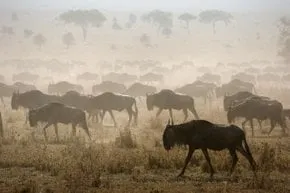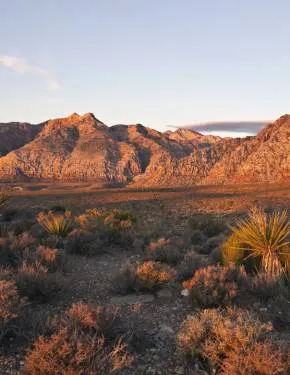What is Tarantula Migration?
Tarantula migration is a fascinating natural phenomenon where these large, often hairy spiders embark on a journey. This isn’t a mass exodus, but rather a seasonal movement, primarily by adult male tarantulas, seeking mates. This migration typically occurs during specific times of the year, and the scale of this event is remarkable, with hundreds or even thousands of tarantulas traversing landscapes in search of a mate. The spiders’ behavior is a crucial part of their life cycle, playing a vital role in the ecosystem by ensuring reproduction and the continuation of the species. Understanding this migration provides insight into the complex lives of these creatures.
When Does Tarantula Migration in Arizona Occur?
In Arizona, the tarantula migration season generally takes place during the late summer and early fall months, typically from late August through October. The timing is closely linked to the mating season and the optimal environmental conditions for reproduction. The exact start and end dates can fluctuate slightly depending on the weather, with warmer temperatures often triggering the migration earlier in the season. This timeframe is when adult male tarantulas, having matured and molted into their final form, begin their search for receptive females. Keep in mind that the migration can be highly dependent on local climate patterns, meaning it may vary slightly from year to year and by region within Arizona.
Why Do Tarantulas Migrate?

The primary reason for tarantula migration is reproduction. Adult male tarantulas, after reaching maturity, leave their burrows or established territories in search of females. These females typically remain in their burrows, waiting for a mate to find them. The males must travel to locate these females. This journey is driven by the instinctive need to reproduce and pass on their genes. The migration allows for the mixing of genetic material and ensures the continuation of the tarantula population. The process is fraught with danger, as the males face predators, environmental hazards, and competition from other males.
The Arizona Tarantula Migration Top 5 Facts
Fact 1 The Sheer Numbers
The Arizona tarantula migration can involve vast numbers of spiders, especially in areas with high tarantula populations. It’s not unusual to witness dozens, if not hundreds, of tarantulas on the move. The sheer scale of the migration is often astonishing, attracting the attention of nature enthusiasts and photographers. The concentration of spiders can vary, with some areas experiencing a higher density of migrating tarantulas. This mass movement of tarantulas represents a significant biological event, showcasing the reproductive drive within the local tarantula populations.
Fact 2 The Time of Day

Tarantulas are most active during the late afternoon and early evening hours. The migration is often observed as the sun begins to set or after dark, and this is the period when they are most likely to be seen actively traversing the landscape. This nocturnal or crepuscular behavior is likely an adaptation to avoid the heat of the day and reduce the risk of predation from birds or other diurnal predators. The specific timing can vary depending on the environmental conditions such as temperature and humidity, but generally, the late hours provide the optimum conditions for their journey.
Fact 3 The Males Are on the Move
It’s primarily the adult male tarantulas that undertake the migration. The females tend to remain in their burrows, waiting for the males to find them. This difference in behavior is a key characteristic of tarantula mating patterns. Once the males mature, they embark on a quest to find a female, which can involve traveling considerable distances. The males are easily identifiable by their longer legs and a more slender build compared to the females. This migration behavior is specific to the male tarantulas, as they are driven by their biological imperative to find a mate.
Fact 4 The Reasons for Migration
The main reason for migration is mating. Male tarantulas leave their burrows to seek out females for reproduction, which ensures the species’ survival. This journey is a critical aspect of their life cycle, triggering a series of behaviors. Upon finding a female, the male must often compete with other males. After mating, the males typically die within a year, while the females can live for many years and continue to reproduce. This migration is a testament to the powerful reproductive drive that governs the species.
Fact 5 The Best Places to See the Migration

Certain areas in Arizona are known hotspots for the tarantula migration. These locations often include areas with suitable habitats, such as grasslands, deserts, and canyons. Popular locations include the areas surrounding Tucson, Phoenix, and the vast expanses of the Sonoran Desert. The migration usually occurs in open areas, where the spiders are easier to spot, especially on roads and trails. If you’re hoping to witness this natural spectacle, it’s best to research the migration patterns in your chosen location, and plan your visit accordingly.
How to Safely Observe the Tarantula Migration
Observing the tarantula migration can be a rewarding experience, but it’s essential to approach it safely. Keep a respectful distance from the spiders to avoid disturbing them or getting bitten. Avoid handling or provoking the tarantulas, and be mindful of where you step and place your hands. It’s best to observe them from afar. If you’re driving, be careful, especially at dusk and dawn, when tarantulas are most active. It is important to respect the wildlife and their habitat, ensuring that you contribute to their conservation.
What to Avoid During Migration
During the tarantula migration, there are several things to avoid to ensure both your safety and the well-being of the spiders. Avoid touching, handling, or deliberately provoking the tarantulas, as this can lead to bites. Do not use flash photography when photographing the tarantulas, as the bright light can disorient and potentially harm them. It’s best to avoid driving recklessly in areas where you know the migration is taking place, as vehicles can cause harm. Lastly, it’s important to resist the urge to collect or remove the tarantulas from their natural environment, which is essential for the ecosystem and tarantula’s survival.
Tips for Photographers

For photographers looking to capture the tarantula migration, careful planning and respect for the animals are essential. Use a telephoto lens to maintain a safe distance while still getting close-up shots. Focus on capturing the natural behavior of the spiders, rather than trying to pose or manipulate them. Remember to shoot during the late afternoon and early evening when tarantulas are most active. If you use artificial light, diffuse it to avoid startling the spiders. Photography should be done without causing disturbance to their natural behaviors, and it’s important to prioritize the well-being of the tarantulas.
Conservation and Tarantula Migration
The tarantula migration highlights the importance of habitat conservation. Preserving natural habitats ensures the survival of these spiders and their ability to continue their migratory patterns. Supporting conservation efforts helps maintain the ecosystem, providing resources and shelter for these animals. Educating the public about the importance of tarantulas in the ecosystem is crucial for promoting conservation efforts. Understanding and protecting tarantula habitats is beneficial for biodiversity and maintaining the balance of nature. This is key for maintaining the tarantula migration patterns for years to come.
The Importance of Tarantulas in the Ecosystem
Tarantulas play a vital role in the ecosystem. As predators, they help control populations of insects and other invertebrates. Their presence helps to maintain balance within their habitats. They also serve as a food source for larger animals, such as birds and reptiles, and therefore contribute to the food chain. By controlling insect populations, tarantulas assist in the health of the ecosystem. The tarantula migration is also essential for the continuation of their species, contributing to the overall biodiversity of their environments. Understanding and appreciating the role of tarantulas is crucial for promoting their conservation.
